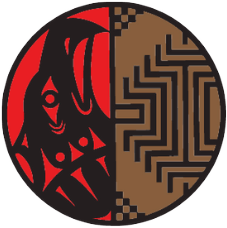Elementary Unit 2 Washington State History

Living in Washington Celilo Falls
Historical Era
1856 – 20th Century
STI Unit Overview
“Living in Celilo: A Storypath Exploring the Living Legacy of Celilo Falls” by Shana Brown consists of seven episodes that explore the story of Celilo Falls. Depending on the reading and learning levels of your students, each episode should take about a week. In Episodes 1–3, students create the setting, characters, and context. Students then respond to and create stories surrounding the historical events that lead up to the inundation of Celilo Falls. Finally, students reflect on the effects of the damming, not only for tribal people, but for all stakeholders: commercial non-tribal fisheries, farmers, and non-tribal citizens. Students will bear witness to the legacy of Celilo and its importance to tribal people, even more than 50 years after it death.
About Storypath: Philosophy and Aims:
Storypath is a constructivist simulation in which students create their own communities and stories based on historical events. This storypath design relies on the imagination and creativity of the students and gives them an opportunity to blend their imagination with the historical record.
For example, one of the tasks is that students will build a model of Celilo Village. The goal is not to get the model exactly as Celilo Village was before the falls’ inundation. Rather the goal is to have student become personally invested in the story they are about to tell, understand the significance of the village, and become emotionally involved in the telling of their story. This is when the real learning begins.
Storypath’s goal is not to memorize names and dates; its intended focus is on concepts and emotions. Thus, this storypath is designed to give students a deep understanding and empathy for what it might have been like to be a Northwest stakeholder during this tumultuous and heartbreaking time.
The unit contains the essential elements of all storypaths—the creation of the frieze (showing the setting of the story), characters that the students create for themselves, the building of a social context, and critical incidents. Critical incidents are introduced in this unit through videos, articles, and oral history.
STI Essential Questions
- What is the legal status of the Tribes who negotiated or who did not enter into United States treaties?
- What are the ways in which Tribes respond to the threats and outside pressure to extinguish their cultures and independence?
- What do local Tribes do to meet the challenges of reservation life: and, as sovereign nations, what do local Tribes do to meet the economic and cultural needs of their Tribal communities?
Standards for Social Studies, English Language Arts, Environmental and Sustainability Education, and Social Emotional Learning
OSPI-Developed Assessments for Social Studies
-
Dig Deep and Whose Rules?
Unit Developed By
Shana Brown (Yakama descendent)






